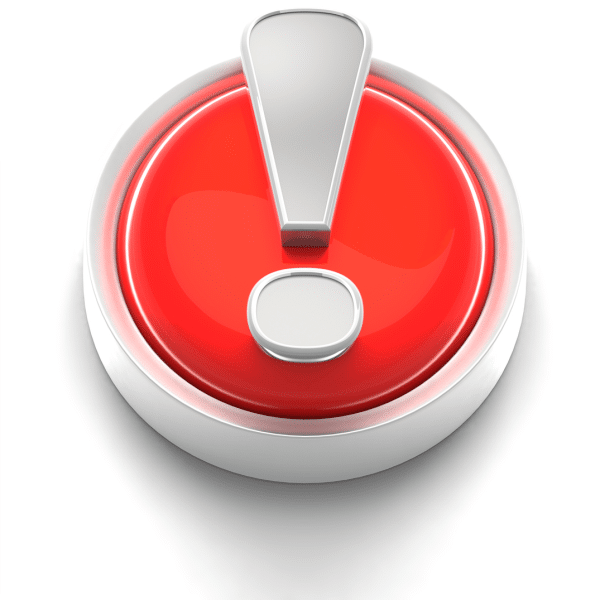The Dangers of Backfeeding

Updated January 2024
Whether prepping your home for an unprecedented emergency or simply making an effort to prepare for inclement weather, having a properly installed generator will allow you to continue using your stove, your hot water heater, and your HVAC equipment during a power outage. However, when it comes to putting your generator in, you never want to wire it directly to your home circuit.
Generator backfeeding is one of the worst mistakes that homeowners in Seattle, WA, can make. The following covers everything you need to know about the dangers of generator backfeeding.
What Generator Backfeeding Is
Homes typically rely on power grids as their primary source of electricity. In these setups, power flows from the grid via utility lines that are part of the local infrastructure. When this flow of electricity is disrupted, all homes that are reliant upon the affected section of the grid lose power. Power outages occur when lines are damaged, downed, or otherwise disturbed. In many areas throughout the Pacific Northwest, power outages are frequently the result of heavy storms, auto accidents, and strong winds.
During an outage, household generators can kick immediately into action to prevent any gaps in the power supply. However, these generators cannot be connected directly to the home circuit. This is because the home circuit is simultaneously connected to the grid. Thus, not only will this connection power the home, but it will also transmit power back to the grid. This is known as backfeeding.
Backfeeding reverses the normal flow of energy. It’s hazardous to the households in which it’s done, to neighboring properties, and to those who work for utility companies. The only way to safely install a generator is by disconnecting it from the grid using a transfer switch.
Why Is Backfeeding Dangerous?
The dangers of backfeeding affect homeowners and building residents, and they can also affect utility line workers and everyone else living in the vicinity. Not only is backfeeding risky, but it’s also illegal in the state of Washington. By feeding electrical energy from a home generator into public utility wires, homeowners create a high risk of electrocution for any utility crews that are working on downed lines.
This reverse flow of energy can also cause generators to catch fire or explode. For instance, even if no utility workers are harmed during power restoration efforts, once the grid-based power supply is restored, the home generator will still be connected. This will leave the home circuit with two operational sources of power. Both the home panel and the generator will be subjected to an abundance of strain. In this case, the risk of starting a house fire is incredibly high.
One strategy used to mitigate some of these risks is opening up the main breaker and then isolating the home’s wires from all utility wires. Unfortunately, this strategy is equally unsafe and just as illegal as standard backfeeding. This is not a sure way to isolate energy given that the home breaker won’t provide an adequate gap. Moreover, if the breaker has sustained any damages as the result of power outages or recent weather events, attempting to use this form of mitigation can also lead to electrocution or fire.
The Widespread Effects of Backfeeding
With little electrical knowledge, connecting a generator to the home panel might seem like a good idea. It’s important, however, to consider the potential widespread effects of this decision, especially when outages are related to extreme weather events or unprecedented emergencies.
One such example is any instance in which exceedingly high temperatures overwhelm power grids due to excessive use of cooling systems. During extremely hot, dry weather, a house fire can put every home in the neighborhood at risk. Moreover, if local emergency response teams are already overwhelmed, house fires can burn unchecked indefinitely.
Beyond causing serious harm to utility workers and creating the risk of house fires, backfeeding is a do-it-yourself installation technique that can leave homeowners financially devastated. House fires and other property damages that are caused by backfeeding are not covered by most home insurance policies. Most home insurance companies have very careful language in their policies pertaining to the installation and use of home generators. This language covers permanent backup generators and smaller portable generators.
For all property events and damages relating to home generator use, correct and professional installation is required. Thus, before installing generators or having any generators installed, homeowners are always advised to carefully review the related terms and conditions in their home insurance policies.
The Function of a Transfer Switch: What It Is and What It Does
Large permanent generators are the preferred means for supplying backup power to a house. Unlike smaller portable generators, these units can support multiple appliances at once, and many can even meet a home’s entire electricity needs throughout the duration of outages. To safely install a permanent generator, a transfer switch must be used. This is a setup that keeps the main circuit completely isolated into the generator.
With a transfer switch in place, power is never back-fed into the power grid, and the danger of fire, electrocution, and other problems no longer exists. Transfer switches can be either manual or automatic. With a manual transfer switch, a homeowner must throw the switch to convert to the alternative energy source. Conversely, an automatic transfer switch is instantly triggered whenever one of the two connected power sources either loses or gains power. With automatic transfer switches, homes can seamlessly transfer between the normal power grid and their backup generators with virtually no delays, and no tracking, monitoring, or effort on their part.

How to Safely Use Portable Generators
Much like permanent generators, portable generators should never be mounted to the home power supply without the assistance of a qualified professional. These freestanding units are typically only sufficient for supporting a small number of appliances at once, and often only one. In most cases, appliances can be safely connected directly to portable generators.
Although it is possible to plug a portable generator directly into a wall outlet, this is also something that should never be done. Plugging a portable generator directly into a wall outlet requires the use of a male-to-male cord or a cord that has both male ends. If anything or anyone touches the unused end of the male-to-male cord while the portable generator is plugged into the wall, electrocution will occur.
Many homeowners in the western Washington area are equipping their homes with backup generators. These secondary sources of power can effectively keep all electrical appliances running after a power outage has occurred. However, the benefits of using generators for this purpose are greatly undermined by improper installation. Wiring them directly into home circuits can be dangerous for everyone. Moreover, when property damages or physical injuries result from improper generator installation, they are unlikely to be covered by any home insurance policy.
The only way to install a generator with assured effectiveness and safety is by having this process completed by a licensed electrician. At Brennan Electric, we handle all manner of electrical installations and electrical repairs. We also offer testing and installation for smoke and carbon monoxide detectors, surge protection services, and assistance with all types of generators. For detailed information on our full range of services or to set up a consultation appointment, call us today.
Contact Brennan Electric today

